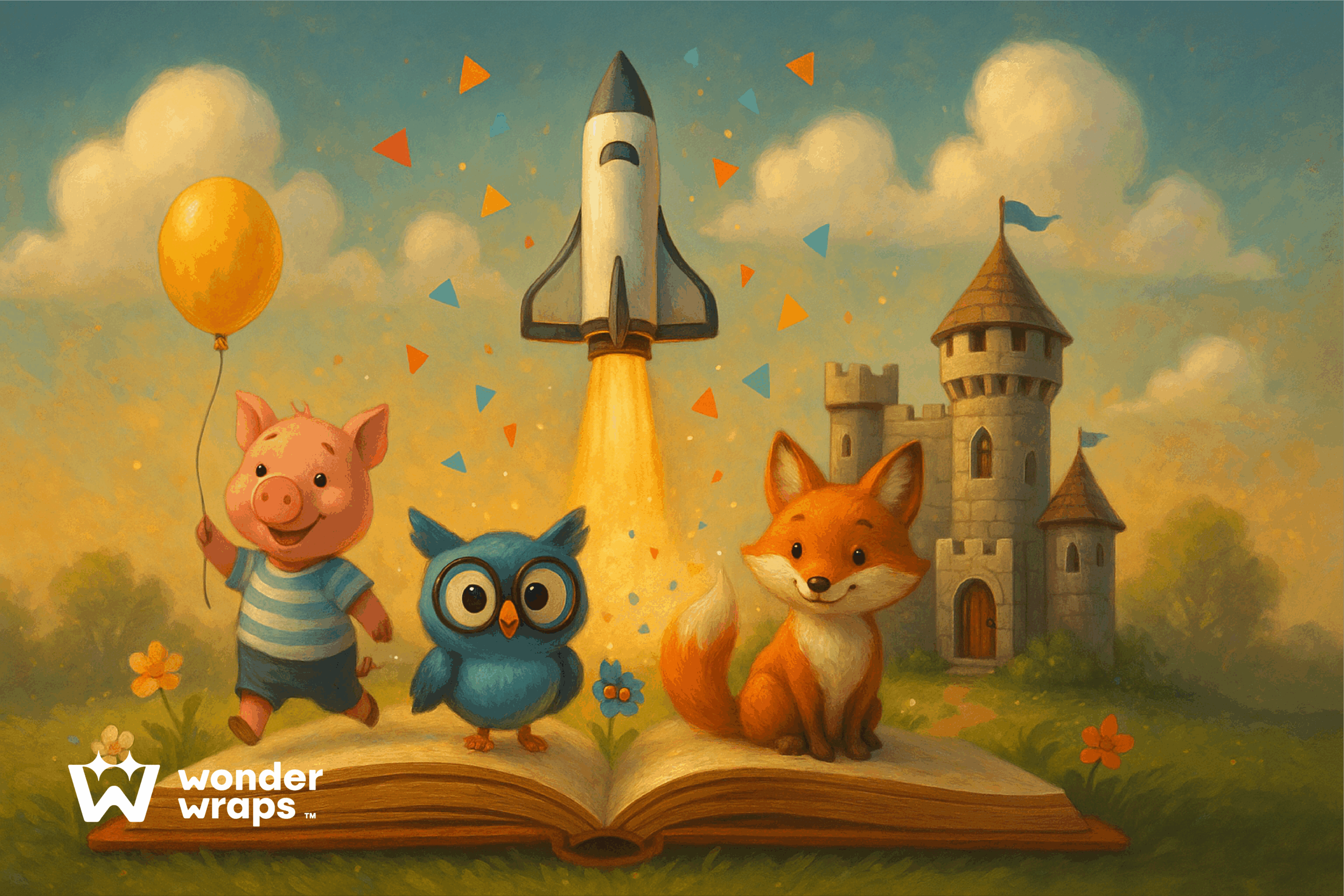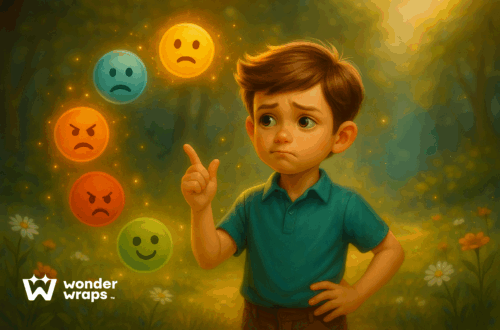Key Takeaways
- Kids’ learning books play a key role in supporting early development, emotional growth, and lifelong learning.
- The best books are age-appropriate, combining educational value with fun and engaging stories.
- WonderWraps offers a curated, customizable collection of books tailored for every age and learning stage.
Choosing the right books for children is more than just picking a colorful cover. Kids’ learning books can spark curiosity, boost early development, and build important life skills one page at a time. For parents and educators, these books help shape young minds from toddlerhood through the early school years. This guide highlights some of the best options out there for every age and stage of learning.
Best Kids’ Learning Books
In this section, we’ll explore the best kids’ learning books for every stage of childhood, from curious toddlers to confident early and older elementary readers. Each recommendation is chosen to match their growing minds, helping children learn, imagine, and thrive with every turn of the page.
Toddlers (Ages 1-3)
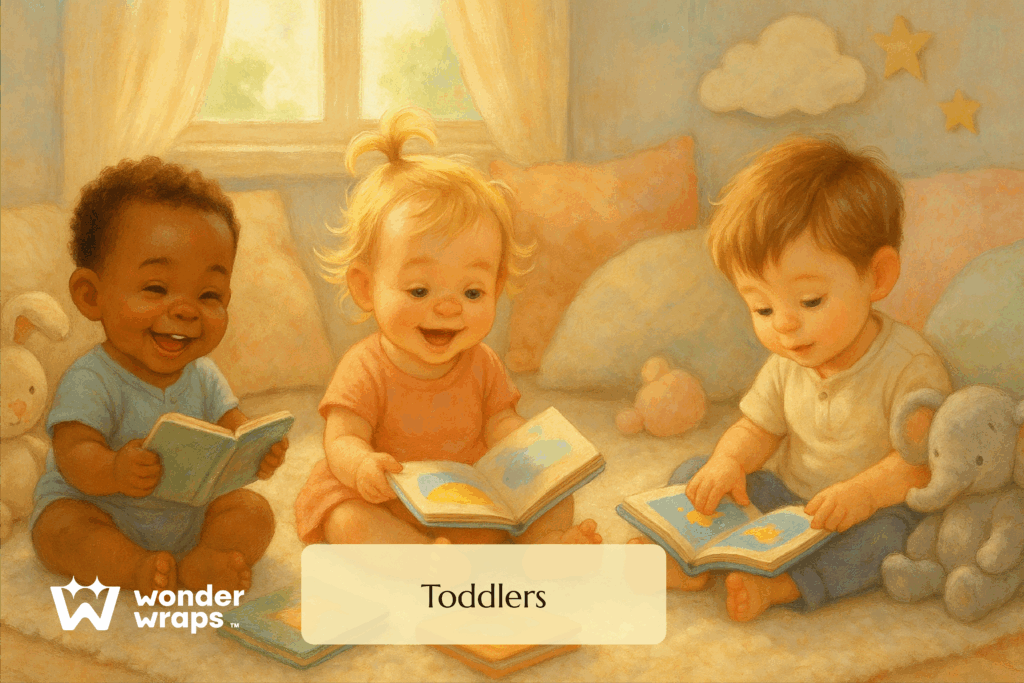
At this age, children are exploring the world through sight, sound, and touch. Their brains are growing rapidly, and they’re beginning to understand language, patterns, and emotions. Therefore, it’s essential to introduce books that are simple, repetitive, and interactive. These features help toddlers build vocabulary, recognize familiar objects, and develop a love for learning.
“Brown Bear, Brown Bear, What Do You See?”
This book combines rhythmic text with bold, colorful illustrations to introduce animals and colors in a way that sticks.
Each page follows a repetitive, sing-song pattern that encourages toddlers to predict what comes next. This helps with language development, memory, and sequencing.
The repetition makes it easy for even the youngest readers to join in, while the vibrant pictures capture their attention. It’s a gentle introduction to observation, rhythm, and early storytelling.
“Where’s Spot?”
Where’s Spot? invites little ones to lift flaps and search for Spot the puppy in various hiding places around the house. It’s a simple storyline, but it encourages critical thinking and introduces the idea of searching and solving.
The flaps promote hand-eye coordination and fine motor skills. Toddlers also begin to grasp object permanence—the idea that things can exist even when not seen—making this book both fun and educational.
“Dear Zoo”
In Dear Zoo, a child writes to the zoo requesting a pet, and the zoo replies with a series of unsuitable animals: a lion is too fierce, a giraffe is too tall, and so on.
Each animal is revealed by lifting a sturdy flap, which makes reading feel like an adventure. Toddlers learn descriptive words and cause-and-effect reasoning as they see why each animal is not suitable.
The ending provides a gentle surprise and a satisfying resolution, perfect for little readers building early comprehension.
Preschool (Ages 3-5)

Preschoolers are becoming more independent and imaginative. They start asking questions, expressing emotions, and recognizing letters, numbers, and patterns. Thus, books for this age should support emotional awareness, creativity, and basic literacy. Repetition, rhythm, and visual storytelling are especially powerful for this stage.
“Chicka Chicka Boom Boom”
This lively alphabet rhyme brings letters to life as they race up a coconut tree. The rhythmic and catchy text makes it fun to read aloud, helping preschoolers remember the order of the alphabet. The bright, bold illustrations hold their attention, and the playful narrative introduces both upper and lowercase letters.
It’s a great book for building letter recognition and enjoying the sound of language. The musical quality of the story encourages participation and movement, making it a classroom and bedtime favorite.
“The Pigeon Has Feelings, Too!”
Mo Willems brings humor and heart to emotional learning in this simple yet expressive board book. Pigeon, a familiar character from Willems’ popular series, is coaxed by his friend the Duckling to show different emotions.
The exaggerated expressions and relatable feelings help children identify and talk about their own emotions. It’s perfect for sparking conversations about how we feel and why, using humor and simple language.
This book helps preschoolers build emotional intelligence and recognize the feelings of others in a fun, approachable way.
“The Very Hungry Caterpillar”
This timeless classic follows a tiny caterpillar as it eats its way through a variety of foods before transforming into a butterfly. The story teaches days of the week, counting, and the life cycle of a butterfly.
Eric Carle’s signature collage art is colorful and engaging, and the book’s die-cut holes invite little fingers to interact with each page. Its simple yet rich content encourages vocabulary growth and sequencing skills. It’s also a great tool for introducing the concept of change, both in nature and in life.
Early Elementary (Ages 6-8)
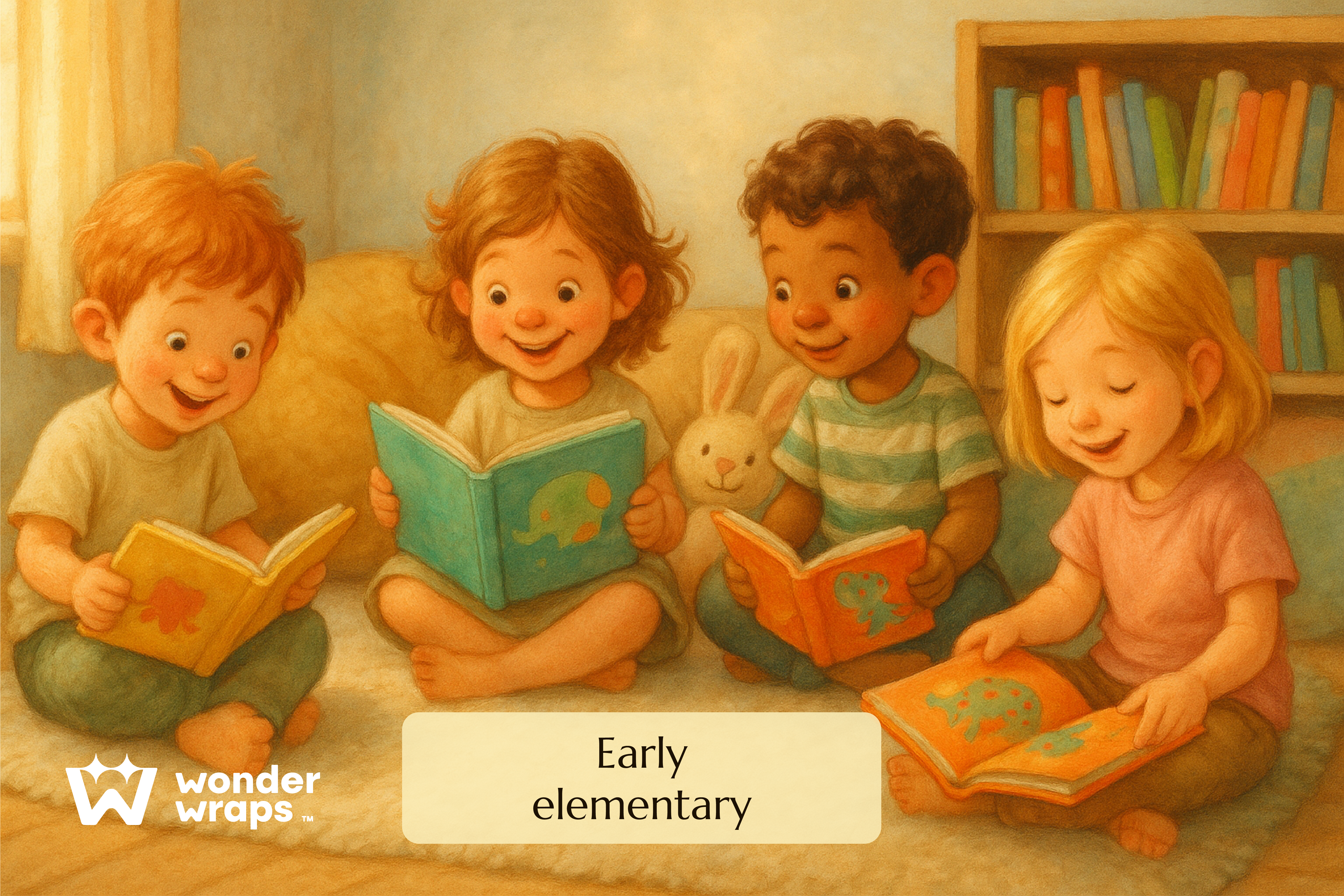
Children in this age group are learning to read independently and explore the world more deeply. They ask “how” and “why” questions and love stories that mix fun with learning. Books should encourage curiosity, build comprehension, and support the development of empathy and critical thinking.
“The Magic Tree House”
This engaging chapter book series follows siblings Jack and Annie as they travel through time on magical adventures. Each book blends fun, fiction, and real-world facts, sparking interest in history, science, and geography.
The chapters are short, and the language is beginner-friendly, making it ideal for early readers transitioning into longer texts. These stories encourage imagination while sneaking in educational content that doesn’t feel like homework. The recurring characters and patterns also help build confidence in reading comprehension.
“Little Kids First Big Book of Why”
Perfect for curious minds, this book answers the endless “why” questions kids love to ask. It’s filled with colorful photos, fun facts, and simple explanations that appeal to young readers.
The content covers everything from the human body to animals to everyday phenomena. It encourages kids to explore, ask more questions, and think critically about how the world works.
Designed with a child-friendly layout, it also supports visual learning and vocabulary development. It’s a go-to book for independent reading and shared discovery.
“Frog and Toad Are Friends”
This heartwarming collection of short stories explores the gentle friendship between Frog and Toad. Each story is filled with humor, kindness, and simple life lessons. The language is easy to read, and the short chapters help young readers build stamina and fluency.
Through their adventures—like sending mail, finding lost buttons, or waiting for spring—children learn about empathy, patience, and the value of friendship. Lobel’s illustrations and storytelling make this a comforting read that builds emotional and reading skills.
Older Elementary (Ages 9-12)
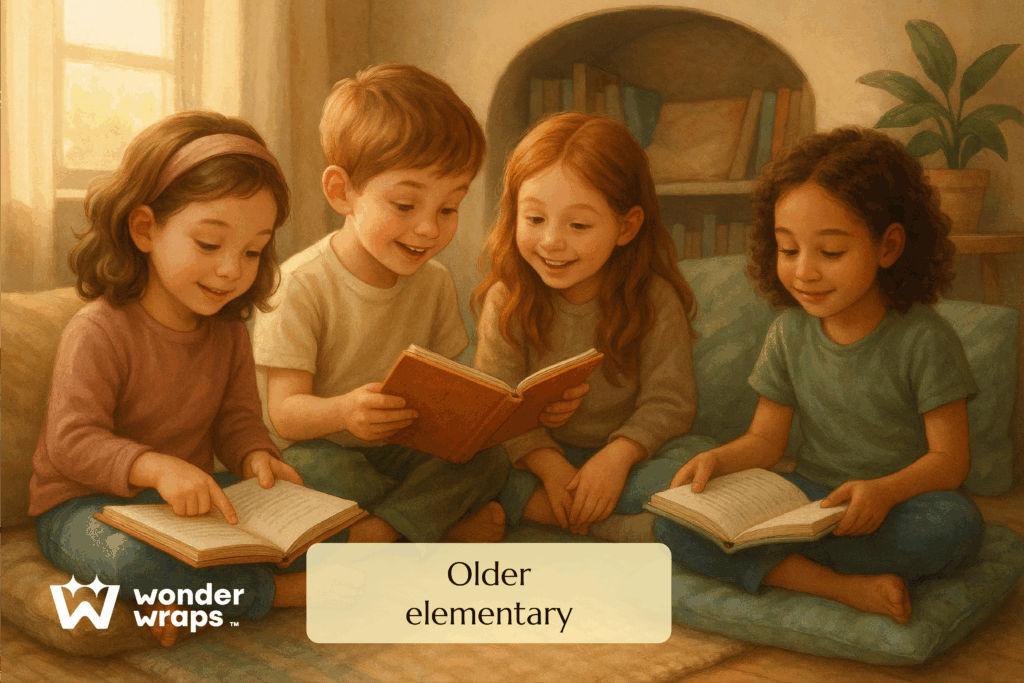
At this stage, children are ready for more complex plots, deeper emotions, and new perspectives. They start thinking critically, forming opinions, and developing their own voice. Therefore, books for this age should challenge their imagination, help them explore identity, and introduce real-world themes in thoughtful ways.
“Wonder”
This powerful story follows August Pullman, a boy with a facial difference, as he navigates public school for the first time. The book explores kindness, bullying, friendship, and acceptance through multiple perspectives, giving readers insight into how people see and experience the world differently.
Wonder encourages empathy and compassion, showing that everyone is fighting their own battles. With accessible language and a strong emotional core, this book opens the door to important conversations about differences and the impact of our words and actions.
“The Secret Coders”
This graphic novel series makes learning computer coding fun and adventurous. The story follows Hopper and her friends as they uncover mysteries at their school using logic, puzzles, and coding skills.
The comic format is visually appealing and helps readers understand basic coding concepts without feeling overwhelmed. It combines STEM learning with a mystery plot, keeping readers entertained while teaching them how to think systematically. It’s a great pick for kids who enjoy problem-solving and want to explore how technology works.
“A Wrinkle in Time”
This science fiction classic blends time travel, space exploration, and big philosophical questions in an imaginative adventure.
Meg Murry, her brother Charles Wallace, and friend Calvin travel across dimensions to rescue Meg’s father and battle darkness in the universe. The story introduces abstract concepts like good versus evil, individuality, and resilience.
While more complex than books for younger readers, it challenges older kids to think deeply and embrace their creativity. A Wrinkle in Time is ideal for those ready to explore thought-provoking themes through fantasy.
How to Choose the Right Book for Your Child
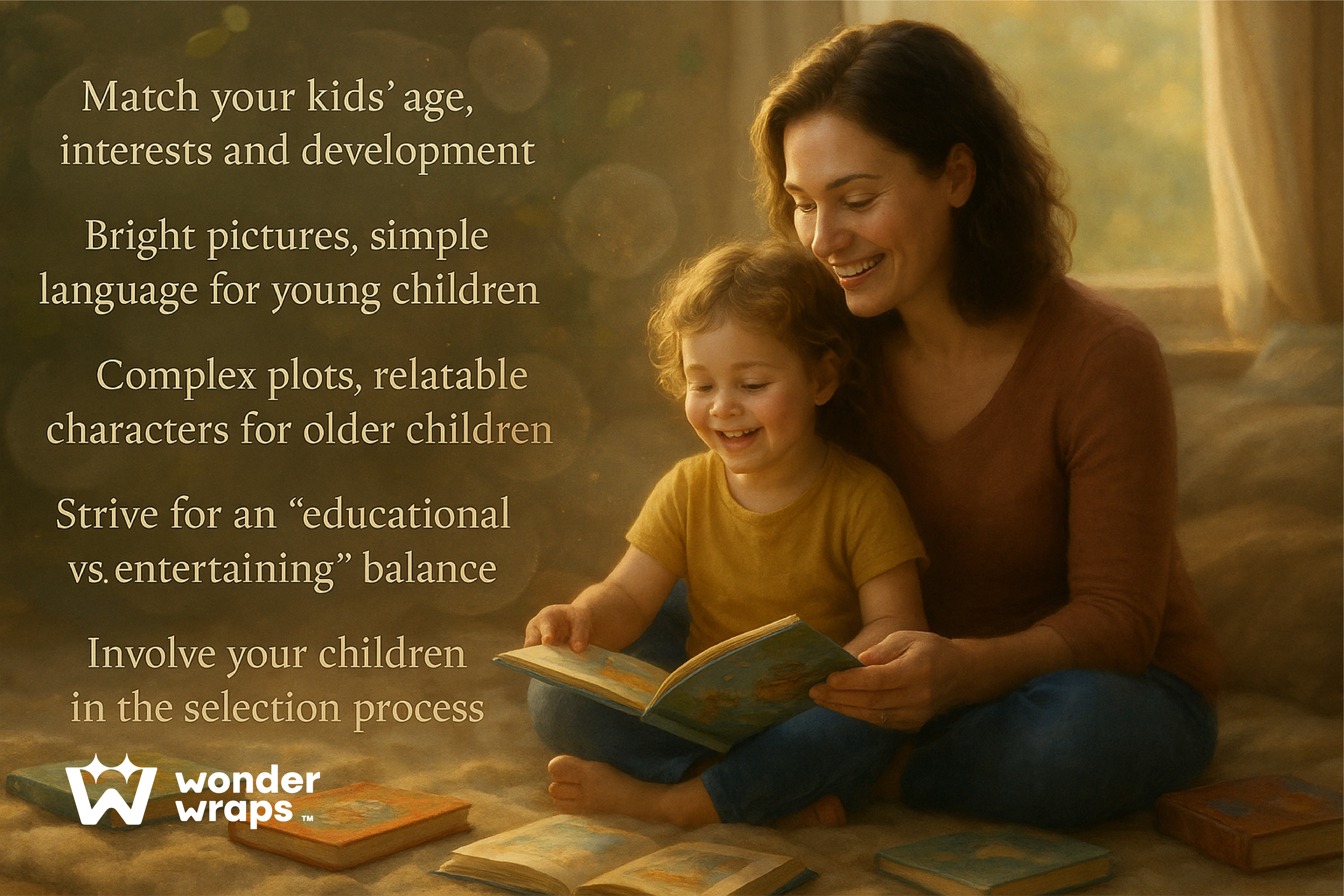
Choosing the right book for your child involves more than picking a title with a cute cover. It’s about finding stories that match their age, interests, and developmental stage. Younger children, especially toddlers and preschoolers, benefit from books with bright pictures, simple language, and lots of repetition. As they grow, look for books that offer more complex plots, relatable characters, and age-appropriate challenges.
Make sure the content is suitable for your child’s maturity level. Even though a book is written for their age, it may contain language or themes that they are not yet ready for. Reading a few pages beforehand or checking reviews can help ensure the book aligns with your values.
It’s also important to strike a balance between learning and fun. While educational books build vocabulary, comprehension, and critical thinking, children are more likely to engage with stories that entertain them. A good learning book should capture their attention and make reading feel like an adventure, not a task.
Most importantly, involve your child in the process. Let them pick books that spark their curiosity. When children feel excited about reading, they’re more likely to develop strong literacy skills and a lifelong love for books.
Conclusion
From toddlers to tweens, choosing the right book helps children grow, learn, and love reading at every stage. Always choose kids’ learning books that support early development, emotional awareness, and curiosity through fun, age-appropriate stories.
At WonderWraps, we make it easy to find thoughtful, educational, and engaging reads for every age group. Our curated collection offers a wide range of titles, with options to personalize each book for a truly special touch.
Browse our full catalog today and find the perfect story to spark your child’s imagination. Shop now and make storytime unforgettable!
Frequently Asked Questions
At what age should I start reading to my child?
You can start reading to your child as early as birth. Even newborns benefit from hearing the rhythm of your voice, while later, they’ll begin to recognize sounds, patterns, and words, helping with early language development.
Are audiobooks beneficial for children’s learning?
Yes, audiobooks can enhance vocabulary, listening skills, and comprehension. They expose children to different voices, accents, and storytelling techniques, enriching their learning experience and evoking in them a love for stories.
How can I tell if a book is too advanced for my child?
You can tell if a book is too advanced for your child by observing their reactions and engagement. If they seem frustrated, lose interest quickly, or struggle to understand the storyline, it may be too complex.
